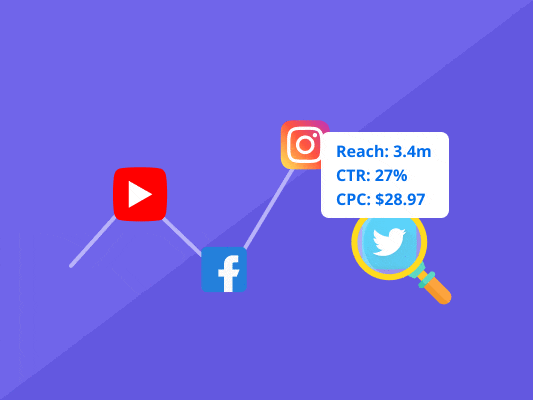Setting and choosing the right social media metrics can set you on a course for success. Check out these important social media metrics.
Social media metrics can help you measure the effectiveness of your strategy.
They can help you see if your strategy works or whether you should readjust. They’ll also help you measure your success, which is crucial for moving forward.

Unsurprisingly, you may find more than 60 social media metrics out there. Tracking each of them is time-consuming and ineffective. It’s much better to focus only on metrics that matter.
That said, we’ll have compiled the most important social media metrics you must know for your marketing success.
Before we go into the details, let’s look into the basics – what are social media metrics?
What Are Social Media Metrics?
Social media metrics are insights about your audience. They help you track your progress and see how well you perform.
We’ll divide the key metrics into 4 basic categories by the social media funnel:
- Awareness – help you see if users recognize you online
- Engagement – help you see what type of content works
- Consideration – see how many users are thinking about buying
- Conversion – see how many users have converted into a customer and purchased
It’s important to measure metrics in all of these areas to maximize your social media strategy’s maximal effectiveness.
The Most Important Social Media Metrics
You know about the basic categories of social media metrics. But, what are specific metrics in these categories, and how can you measure them?
We’ll look at each one of the key metrics in more detail now.
1. Awareness Metrics
These are the metrics that talk about brand attention.
They’ll help you see how aware people are of your brand. It can be valuable in determining a brand’s recognition, trust, and respect.
The two most important metrics we’ll be measuring are:
- Reach
- Impressions
What are these key metrics:
There’s a big confusion about the reach and impressions.
Let’s clear it out so you can better understand each of them and use them properly.
- Reach is the number of unique people that saw your post.
- Impressions are the number of actual visits to the post.
If a person saw the post twice, the reach would be 1, while the impressions would be 2.
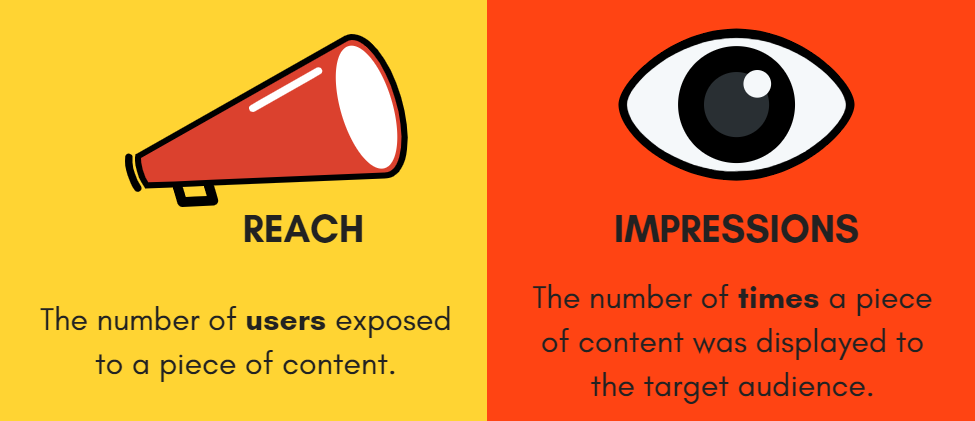
Why is it important:
The stronger the reach, the better the brand awareness.
Reaching more users will help you build your brand’s name and make it recognizable and respected in your industry.
The second thing is impressions.
It’s crucial to expose your posts or ads to your audience more than once. In fact, it’s best to expose it to them at least 7 times – the rule of 7.
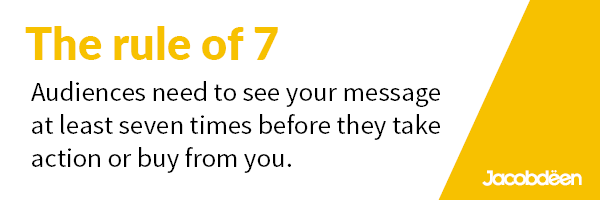
It’ll help you convert more users, which will increase your sales.
How to measure them:
They are easy to measure because most social media platforms include them in Analytics.
You just need to open your social media insights page and you have everything served on a silver platter.
You should see an improvement in reach and impressions over time.
If you don’t, it means you’re doing something wrong and should invest more time in improving brand awareness.
2. Engagement Metrics
These metrics will help you see how well your audience interacts with your posts and content.
There are a few important engagement metrics you should measure:
- Likes
- Comments
- Shares
What are these metrics:
These metrics are pretty straight forward.
Everybody knows what are likes, comments, and shares, right? But, which one of these is the most important, and what do they signal to social media platforms?
Likes are super simple to perform. They’re just a one-click way of saying, “I like your post and agree with it.”
They have the least impact on the score of your posts.
On the other hand, comments require more effort to perform. Users must physically type in their opinion about the matter. It’s a way of saying, “I care about what you posted.”
You need to put in more effort to comment, and so they have a higher impact on your posts.
Shares are the most crucial engagement metric. They require users to show the post to all their friends. It’s a way of saying, “I totally agree with that, you should be aware of it too.”
Because of that, they have the highest impact on your post’s score.
(And your reach and impressions too.)
Why is it important:
Engagement metrics can help you identify what your audience likes.
You can easily find out the type of content that performs well and look at the opposite spectrum and understand what doesn’t.
Having a high engagement rate can also increase your brand’s trust.
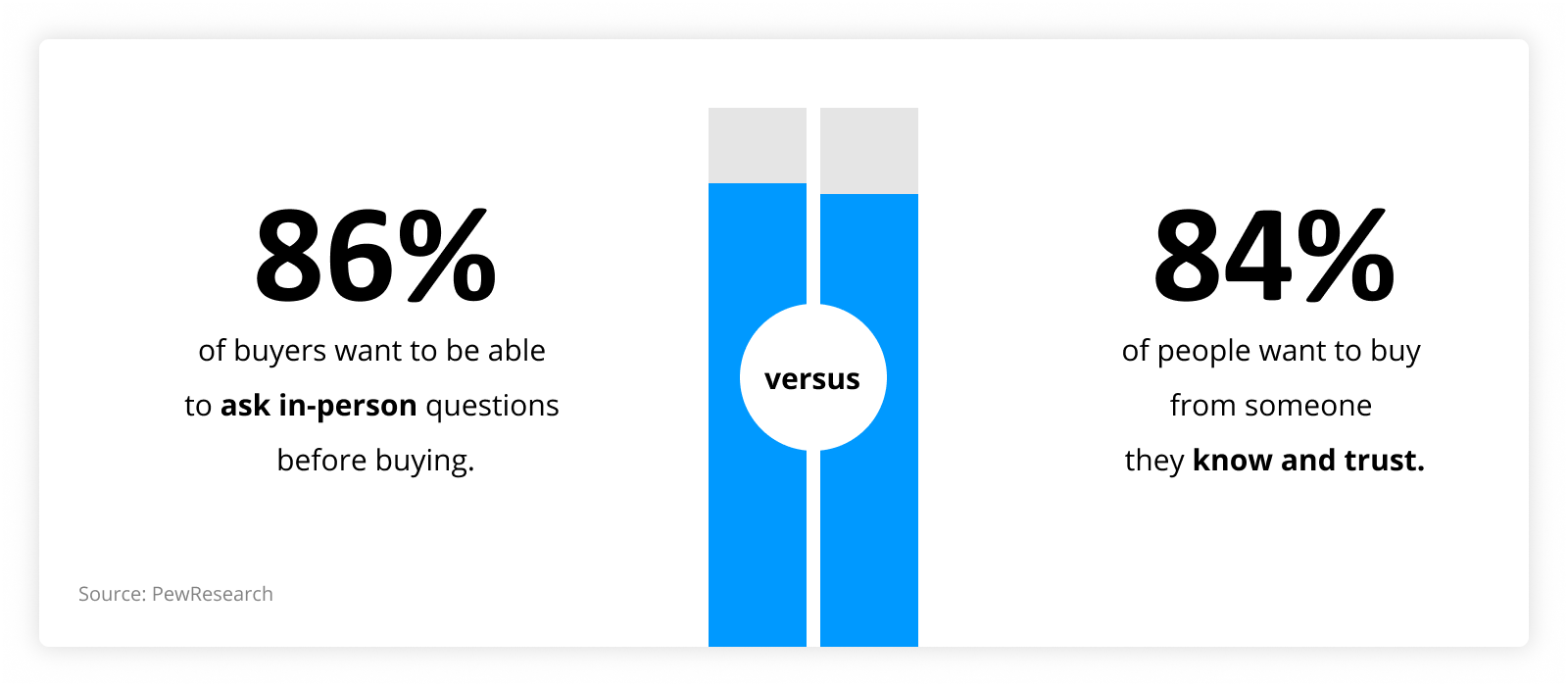
This is especially important for closing more sales.
Who would you believe more – a social media page with 10k followers or a crappy page that barely gets any engagement?
The first one for sure.
Measuring engagement metrics will help you see where you stand, find the type of content that works, improve the engagement and help you get more sales.
To create such content, you need to understand the user intent and deliver them.
You may use BiQ’s Keyword Intelligence to understand the user intent. It tells you what type of content your audience is looking for.
Let’s look at the example below. The keyword has informational intent.
With this insight, you may create your content based on that need. For example, since the keyword has informational intent, searchers are merely interested in looking for more information, not purchasing yet. So you may create informative content such as what is social media marketing, social media marketing strategies, etc.
If you are having writer’s block and don’t know what to write about, you can switch to the ‘Popular Questions’ tab.
Those are real questions that people are searching for in search engines.
Better still, if you want to see the trending searches, you can switch to the ‘Trending Searches’ tab.
Once you understand the type of content, your audience is looking for and your topic, you can head to BiQ’s Content Intelligence to create your content.
You will receive interactive writing tips as your write in the content tool. Just enter your target keyword or phrases, and you will see the related searches that people are interested in.
How to measure them:
Similar to the previous metrics, you can measure them on the social media platform’s analytics page.
You should look at likes, comments, and especially shares.
Make sure you’re improving these numbers over time.
If you don’t, it means you’re doing something wrong, which can cost you followers in the future.
3. Consideration Metrics
Consideration metrics can help you determine how many people are thinking about buying your product or at least considered it. Those who were once only chatting are now diving deeper.
They are discovering more about your product and how it can help them. The most important consideration metrics are:
- Click-through rate
- Bounce rate
- Social visits
What are these metrics:
Click-through rate is the number of visitors who clicked to see your page. You can calculate it by dividing the total clicks by total impressions.
The higher the click-through rate, the better.
Bounce rate is how many people visited your page and immediately exited it (bounced away)—the lower the bounce rate, the better.
Referral traffic is the number of visitors that came from social media. There’s no formula for calculating it.
But you can see it together with the bounce rate in Google Analytics.
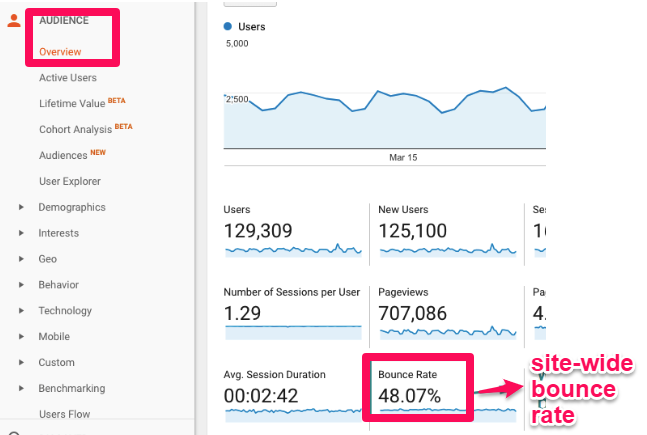
Why is it important:
Click-through rate can tell you how effective your posts are at drawing in prospects.
It’ll allow you to see whether your posts are persuasive and appealing to your prospects’ emotions or not.
A high bounce rate can be a great signal that can tell you two things.
- You’re targeting the wrong audience
- There’s something wrong with your page
Either way, you should figure out which one of these two is and fix it as soon as possible. Once you identify them, take a strategic approach to reduce the bounce rate.
Lastly, there is referral traffic.
It’s a no-brainer; it measures how many people are coming to your site from social media. It’ll help you figure out whether your social media strategy works.
Hopefully, you’re not getting something similar traffic as below.
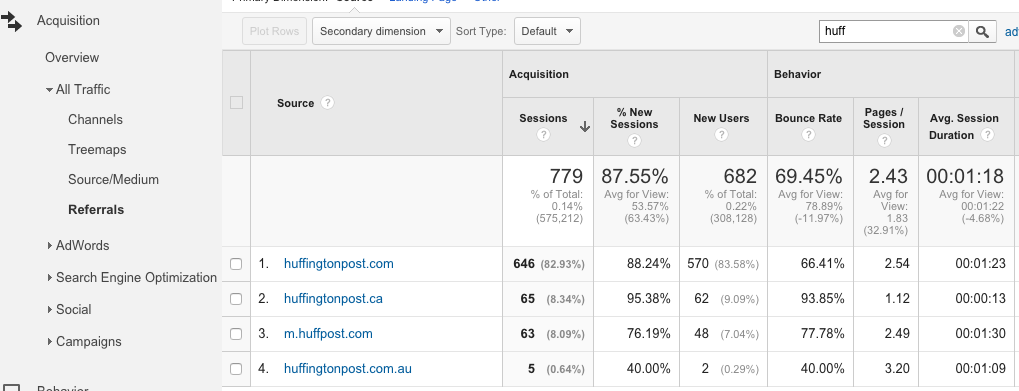
How to measure:
You can easily calculate the click-through rate by going to the Analytics of the specific post. You’ll just divide the reached people by link clicks, as in the picture below.
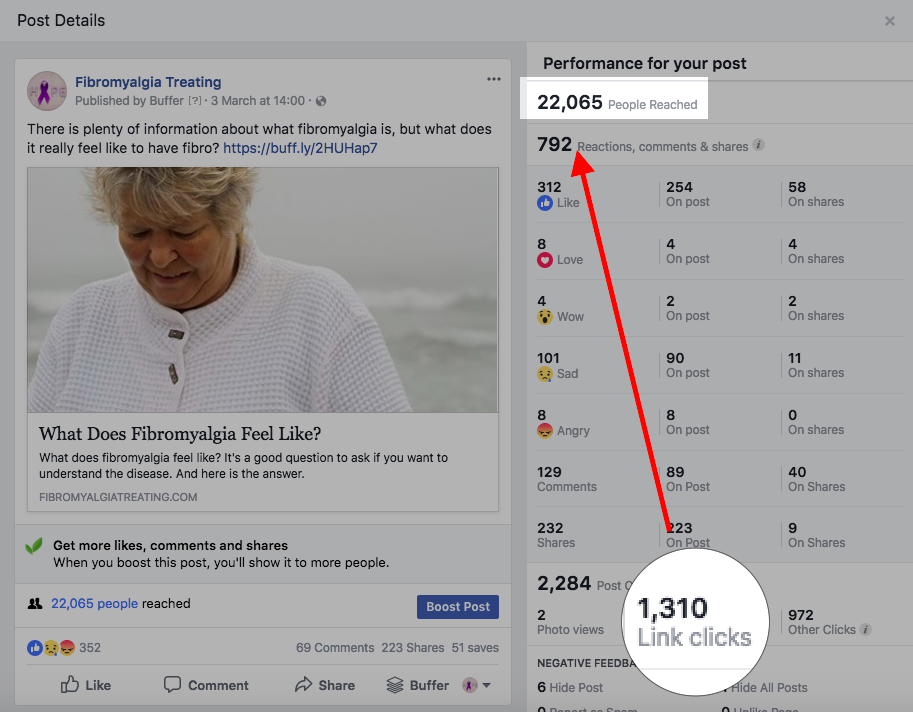
The two other metrics – referral traffic and bounce rate aren’t there. You must go to Google Analytics to see them.
Open Google Analytics and navigate to Acquisition > All Traffic > Channels. There you can see the average bounce of visitors from social media and referral traffic.

It’s a bit inconvenient to switch between social media platforms and Google Analytics, but it’s definitely worth it.
Learn more about driving more social media traffic in our post.
4. Conversion Metrics
Conversion metrics talk about how many visitors made a purchase or converted. The three most important conversion metrics are:
- Conversion rate
- Cost per conversion
- Return on investment
What are these key metrics:
Conversion rate tells you how many people have converted out of people who clicked or visited your page. It can be very useful in measuring the effectiveness of your landing page

Cost per conversion is the amount of money a brand pays to attain a conversion or sale. The formula is a little bit more complex.
The lower the amount, the better.

Return on investment is a crucial social media metric to monitor.
It can tell you how much you are profiting (or whether you are even profiting) from your social media campaigns.
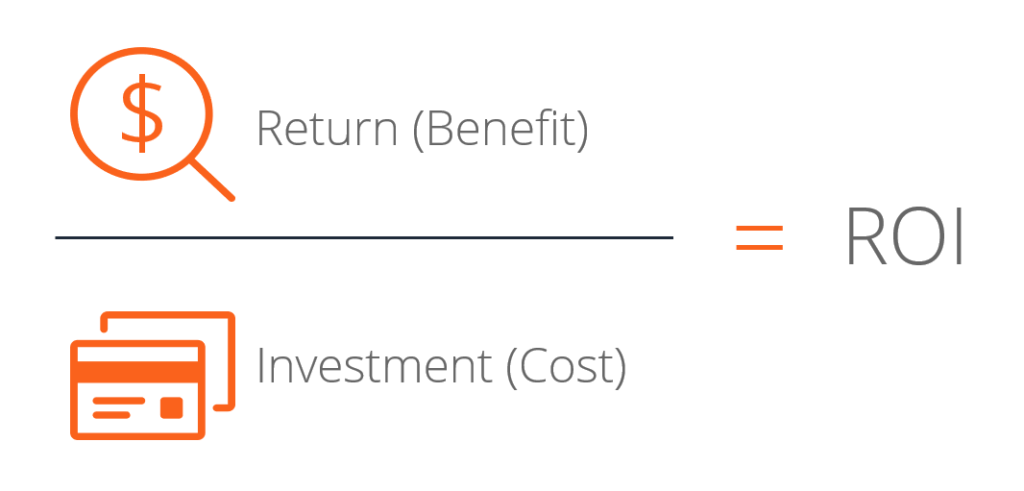
Why is it important:
These metrics are very important, especially for checking your social media marketing conversion.
You’re paying for these campaigns, so you should make sure you’re maximizing the revenues. Therefore the conversion rate should be your #1 priority.
The other two metrics are pretty self-explanatory.
Try to have the lowest cost per conversion and maintain a solid return on investment.
How to measure them:
Figuring out what is your ROI and improving it isn’t easy…
It’s the biggest challenge social media marketers face (it’s even more difficult than developing the actual social media strategy).
The other two aren’t any easier to calculate too.
You’ll need the right social media tools to calculate them.
If you’re using Facebook, the most popular social media platform, you can use their own tool Facebook Analytics for that.

Learn more about how to drive more conversions on social media in my post.
5. Activity Metrics
Activity metrics can tell you how often you respond to your followers and how timely you are. It’s very important because 20% of customers go to social media solely to communicate with the brand and learn more.

Unfortunately, most businesses have poor customer service.
They take days to answer their prospects’ questions or don’t even answer at all. It can have a fatal impact and can cost you a valuable customer…
The most important activity metrics are:
- Response rate
- Response time
What are these metrics:
Response rate represents the percentage of questions, comments, or problems from people talking about your brand that you respond to within a certain amount of time.
You should strive to have a 100% response rate to make a winning customer experience.
Response time talks about how fast you respond to your audience.
You should do everything in your power to respond ASAP. In fact, 40% of customers expect you to respond within an hour.
If you aren’t that quick, try to at least minimize it and respond within 24 hours.
Why is it important:
Customer service is one of the most important things.
If you can’t deliver high-quality customer service, you risk losing your customers to your competitors – the worst nightmare.
The most common issue with customer service?
Long response time or not answering the users’ questions at all. Just look at the “expected vs. real” response time below.
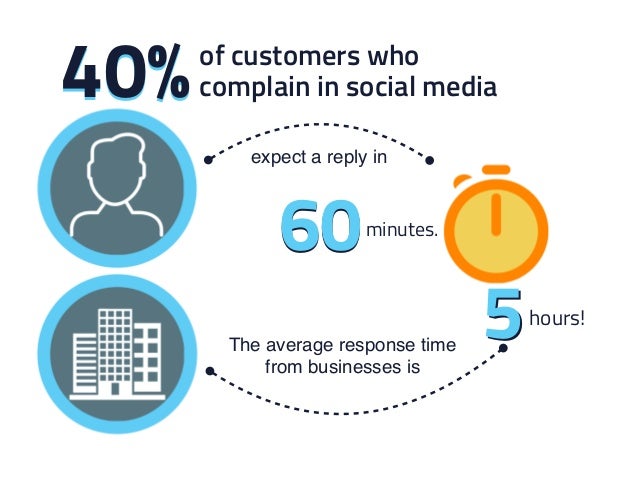
In business, you must do your best to keep your response time low.
Try to answer all users’ questions, comments, or problems and stay in touch with them. It’ll go a long way into building a successful social media presence.
How to measure them:
It’s tough to measure them on your own.
Facebook doesn’t provide you with these stats, and that’s why you will need to use an external tool such as Sprout Social.
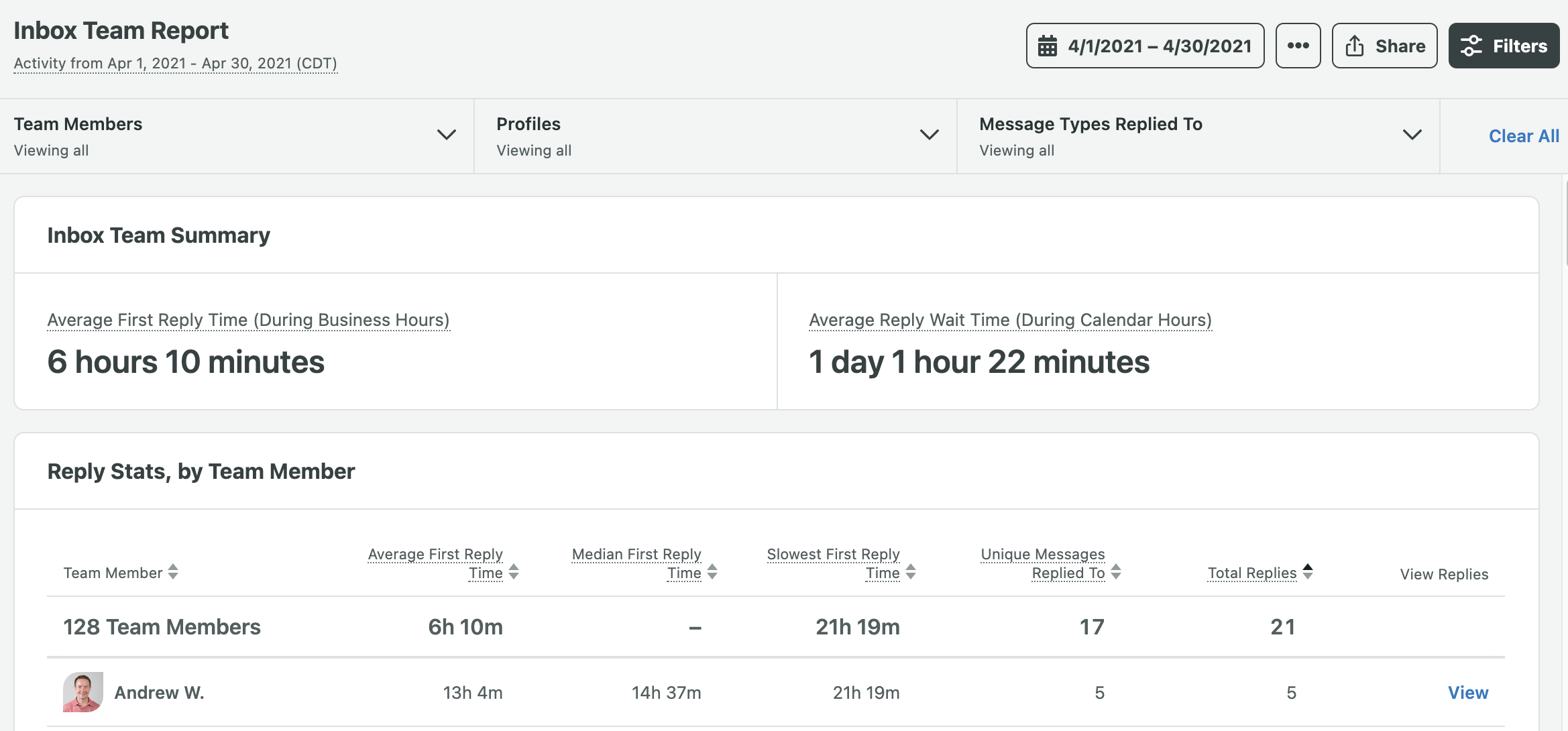
It’ll help you find out more about your response time so you can know where you stand and start improving it.
Conclusion
Here’s a recap of the social media metrics that we have discussed above:
- Awareness metrics – Reach, impressions
- Engagement metrics – Likes, comments, shares
- Consideration metrics – Click-through rate, bounce rate, social visits
- Conversion metrics – Conversion rate, cost per conversion, return on investment
- Activity metrics – Response rate, response time
Each of the key metrics above may help you identify what type of posts works, how well your brand performs, and whether you should readjust your strategy.
Which one of them will you start measuring next? Or did I forget to mention something?
Either way, leave a comment below and let me know right now.



